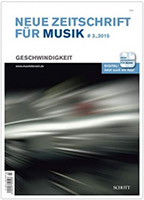press > essays | scientific reviews | radio portraits
|
Olaf Val (DokFest): NILAND
Georg Klein, who also examines socio-political structures inscribed in the environment in other works such as "European Border Watch" or "Ramallah Tours", deliberately focuses in NILAND on the power structures and economic interests hidden behind concrete geopolitical narratives. At the centre of perception is the four-channel sound composition that Klein developed in cooperation with saxophonist Ulrich Krieger. Klein partially underlays these extraordinary sounds with field recordings to create a remarkable sound experience. (...) The post-apocalyptic scenarios on the shores of the Salton Sea with their remains of massive fish die-offs and abandoned settlements form the sad climax of this successful overall composition. In his work, Georg Klein impressively outlines how human mismanagement can lead to unpredictable natural disasters over long periods of time, which in their irreversibility will confront numerous generations with unsolvable tasks in the future. (37. Dokfest Kassel, 18.11. 2020) |
Hanna Grzeskiewicz (positionen): DYSTOPIE sound art festvial
The sound art festival took place in the last days before the second Lockdown began in Germany, in order to - as the organisers Laura Mello and Georg Klein say in their concept note - "showcase artistically framed perspectives that allow the utopian to shine in the dystopian". The creative use of technology showed up as a common thread throughout the exhibition, as in Giuliano Obici's Screen Utopia - a room where all the screens were in block colours, and could also be seen and heard on your own mobile phone by connecting to the local wifi network. It felt like a futuristic nightmare. Vivian Caccuri and Gustavo von Ha’s portrayal of the Brazilian Sertanejo was a fascinating and mesmerisingly absurd interpretation of this phenomenon. Other highlights included Christian Diaz Orejarena’s Fronteras Visibles, a music video addressing cultural appropriation to the soundtrack of Champeta (music originating from the Colombian Caribbean coast), and Ute Wassermann’s Aus Atem, a direct commentary on the danger of singing during the pandemic, which she countered by singing in plastic bags. (positionen 126, 2/2021) Nico Daleman (MusikTexte): Klangkunst-Utopien / Sound Art Utopias (DYSTOPIE sound art festvial) .. by Caccuri and by Ha portrayed with exaggeration, humour and irony. Instead of simple criticism, the work reflects a hopeless situation in which “meme-isation” and ridicule are the only remedies against the insanity of reality. Bruno Gola’s installation “Bruto” also referred to the political situation in Brazil. The piece put the audience in a state of fear, triggered by searchlights, sounds of protests blaring from suspended mobile phones, wall graffiti and sirens. “Breath” by Hyunju Oh is an installation radio play whose scenographic approach includes not only sound and video, but also sound spots, barricades, neon lights, broken mirrors and doors. This work goes beyond the definition of sound art and immerses the audience in a dystopian parallel world where sound is only one of many layers that make up our perception of space. (MusikTexte 168, 2/2021, 89–90) |
Fabian Czolbe (EMS): Klangkunst goes mobile
(...) To illustrate that concept I would like to mention the Music from the Cloud project of Akademie der Künste Berlin and Georg Klein’s 'toposonie :: spree'. The works are based on GPS located sound objects, and the audience requires both a smartphone and headphones. After you arrive in a particular place, a small application has to be started, and one can explore the art work by listening, watching and walking. One of the cloud music pieces is Stefan Rummel’s querfeldein which consist of three placed sounding objects. Each of these places has its own motion, its own rhythm. The sounds are corresponding with a similarly basic structure, but each with a different motion sequence and varying rates. They absorb the structure of the relating place or provide a contrast to it. Georg Klein’s toposonie :: spree works in the same way. It provides more then 20 sounding objects located in specific places. The contextualisation of the placed sounds here is stronger than in the piece of Stefan Rummel because you have a political charged localization, as well as a wide range of sounding formats. toposonie::spree provides formats from audio drama to modified or generated sounds, and it creates strong tensions or correlations between the visual dimension of the location and the sounding objects (e.g. the sparkle of the water in the sun, the movement of leaves in the wind, and the vitreous fragile dimension of the sound disposed in that location). (...) Proceedings of the Electroacoustic Music Studies Network Conference Electroacoustic Music Beyond Performance, Berlin |
Matthias Rebstock (positionen): BORDERS or The Own and the Other
Matthias Rebstock: You have dealt with the issue of boundaries in a whole series of works. In the European Border Watch project, you confront the recipients with their personal relationship to the "protection" of the European external border. In Speak' with me, you point to a normally secret boundary in the center of Brunswick, which delimits the prostitution area from "normal" public space. And in TRASA, you enable passers-by to cross the geographical border or separation between Warsaw and Berlin through an encounter in a video circuit, which is, however, alienated in a special way. Does your new work GRÜN HÖREN / LISTENING GREEN, which you have set up for the IGA in Marzahn, also address this topic? Georg Klein: Yes, you could see that. LISTENING GREEN consists of two parts: six loudspeakers hidden in the trees and a sound telescope. In the "Hörbäume" (sound trees) I work with birds' voices of so-called non-native species and let them compete with the domestic birds. What is interesting for me is the discussion on the question: What is classified as a non-resident and what is not. So what is an invasive species, a species that does not belong here, and who determines that - what is also a mirror for our human society, where we lead the same disputes. M.R.: That is, the discussion about invasive species follows similar patterns to the discussion about human migration? G.K: Exactly. For example, it is always a matter of the perceived threat that the native species are becoming less and subdued. And for this there are actually corresponding examples from the plant kingdom as well as from the animal kingdom. But quite often it is only panic, because in many species it is not clear whether it has any negative effects. For example, the racoon is not rescreened if he does more harm than the fox. Interestingly, I found in my employment that Central and Northern Europe, because of the ice age, has so many species destroyed. Actually many alien species could still come - and it would be an enrichment. And, in principle, everything we call indigenous is, at some point, immigrated. M.R.: LISTENING GREEN is thus also a work that deals with borders, border violations and border crossings. Can you briefly outline what the fascination with the issue of border makes for you? G.K.: It is so that one is occupied with different things and only in hindsight notices that it is always about the issue of borders*. But my perspective is not so much about crossing the boundaries. I find it more interesting to stand on the frontier and move on the frontier than to say: I am breaking the border. This is also such a common topos in the art: crossing boundaries, the boundaries between the media and the genres and so on. That interests me little, but rather, to stay in an ambivalent situation and to look at both sides. So even in an intermediate area, from where it is unclear where it could go. I like to introduce people into such an area of irritation. Irritation is a very decisive word for my work because I think that through it something is triggered in the head: to question and seek oneself. This search is also important to me: I like to build situations in which people can gradually make their discoveries. (Prof. Matthias Rebstock, University Hildesheim, positionen 111, May 2017). > total articel (PDF, german) |
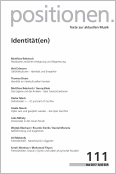 |
Sabine Sanio (catalog 'borderlines'): Reality as a Site for Art
Georg Klein’s work is an anomaly in both sound and new media art. In sound art there is no other artistic position that deals so intensively and rigorously with social reality and public urban space. While these themes are more widespread in new media art, one finds no other artists in that field who have given the musical and the auditory the same precedence, nor is there the same kind of connection to place that Klein has developed. These two aspects constitute the unique quality of this artist’s aesthetic thinking: The precision and sensitivity with which he chooses sounds, noises, images, poems and text compositions for a given project are as unusual as the site-specificity that forms the core of his aesthetic. (Prof. Sabine Sanio, UdK Berlin, Catalog 'borderlines' 2014). > total article (PDF, german/english) |
 |
Max Glauner (catalog 'borderlines'): Are you coming in? Modes of participation in the work of Georg Klein
Overcoming, overstepping or destroying borders: nothing seems more typical in contemporary art than declaring defined marks invalid.¹ Moving along the boundaries however, using them as spaces with inherent potential, as a productive, transitory location, is less popular. (...) The quality of the participatory in Georg Klein’s works does not depend on the degree of physical-practical claims placed on the audience, even when the audience is invited to create interactive sound situations with its movements, as in transition – berlin junction (2001), or to appear before the camera as in TRASA warszawa-berlin (2004). And the same is also true of those works in which, for example, people are requested to take photos of posters of a Nigerian refugee in urban spaces in order to further distribute the images, as in tracing Godwin (2011) or are invited to monitor European borders at the behest of an organisation in tower sound.2 : Watch Tower (2007). A visitor becomes an accessory, maybe even an accomplice, who must again position him- or herself in a critical-reflective relationship to what is being reported as well as to the issue of the social and political acceptability. This process reveals itself again as a form of participation in that it re-enacts the collaboration of the interview situation with itself as a proxy for both interviewer and interviewee, and takes the position of the artist. The display of Speak to me does not challenge the visitor-listener in vain to reveal a little of him- or herself in order to grasp participation, thrown back on themselves, as its own reflection. This demand is present – at times quieter, sometimes louder – in most of Georg Klein’s work, often heard in transitional spaces, border spaces and passages. It is usually a discreet acoustic or visual irritant in public spaces which invites us to pause, to listen and look, to follow the clues and to participate. The dialectics of the participatory were already evident in his early installation Ortsklang Marl Mitte. Blaues Blach – Viel Kunst. Wenig Arbeit [Site Sound Marl Mittown. Blue brat – Much art. Little work], 2002), which not only provided the name for the medium but also the initial structure for Klein’s subsequent sound art works. (Max Glauner, Zurich, Catalog 'borderlines' 2014). > total article (PDF, german/english) |
 |
Michael Reichelt (Kunstforum INTERNATIONAL): Post Colonial Flagship Store
The Berlin based artists Sven Kalden and Georg Klein installed in Vienna as 'Curatorial Executive Officers' (CEOs) the "Post Colonial Flagship Store" in the freiraum space of MuseumsQuartier (quartier21). They invited international artists for works on different aspects of economy, politics and power. (...) In their exhibition historical dimensions of colonialism are also present than current aspects. Georg Klein and Steffii Weismann are interested in exploitation and degration of work in the context of global trading. In their 3-channel video installation "UNorJUSTNESS A" they observe a broker and a palm oil worker, combined with an advertising video for personal investments in commodities for everybody. The hard physical work makes a strong contrast to the office work and the ad promising the most easiest way of earning money. Existing totally seperated they nevertheless stick togehter in a collective utilization process. (Kunstforum INTERNATIONAL, Bd. 230: KONFLIKTE: Zur existentiellen Notwendigkeit von Kunst, Dez. 2014) > total article (PDF) |
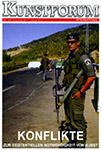 |
Thomas Grötz (DeutschlandRadio Kultur): Announcing Reality - The Composer and Sound Artist Georg Klein
To understand the conditions in which one lives, one can try to perceive them from the outside. A conscious distance or staging is necessary to make it possible to begin to perceive which social factors influence the individual. With his project "turmlaute.2 watch tower" the composer and sound artist Georg Klein defined such an "elevated" perspective. (...) In addition to a special interest in the media and electronic aspects of our time, Georg Klein's early instrumental pieces reveal an element that already foreshadows his later works of sound art, in which acoustic as well as visual aspects play an important role. (...) "Lautsprecher und Leisesprecher" by Georg Klein is a piece of music to be seen, which presents a great challenge to the speakers and speakers. Human abilities and deficits are presented at the same time, and the question appears: What is reality? This question arises again and again in Georg Klein's sound installations. For example, his Sound Walk, to be experienced in Berlin in 2013, was a sound walk in which the participants could spend time in the Berlin government district, where they received additional acoustic information at certain geographical points. (...) Georg Klein's sound installations act as multi-layered whispers. However, they do not pursue the goal of manipulating, or pursuing, in a hidden way, power political interests, but are designed as cautious but also emphatic pointers in the sense of enlightenment, political work. They are critical objections that seek to be receptive to existing social tensions and subliminal meanings. Georg Klein is a critical composer and media artist who looks behind the scenes or hears and wants to give the individual impulses to deal with the complex and multi-layered reality in which he lives. DeutschlandRadio Kultur, total: 58min. / German, 2014 : |
Ursula Maria Probst, Franz Thalmair (KUNSTFORUM International): The in-/visible city as an action space of contradictions
"In the project "Sprich mit mir"/"Speak to me" (2009), realised by Georg Klein with Dorothea von Stillfried, the questioning of costumers of prostitutes produced a sounding image of prostitution in general. In contradiction of the femaie prostitutes who are fighting for her rights and social status in media and press, there is nothing to hear about their costumers and their motivation. They want to stay unknown and invisible. Klein's project has two parts using interviews with costumers (...). Here we use the term 'contradiction' in its original meaning 'contra-diction', used in art practices for all, who are interested in a change of the political, social and economic situation. These art practices of contradiction were always the main impulse of the avantgarde and the social movements in the 20th century, and their main field of activity was the urban space. The in-/visible central theme, which brings together heterogeneity in an 'action space of contradictions', guides to a pair of opposites - of visibility and invisibility. It's an art practice which brings the unseen to light and reduces the all too visible in its brightness." (KUNSTFORUM International, Bd. 212, Nov./Dec. 2011, p. 66-106) |
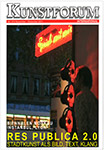 |
Beral Madra (Art Critic and Curator, Istanbul Biennale / Visual Arts Director of European Capital of Culture Istanbul 2010): |
 |
| Stefan Fricke (Hessischer Rundfunk): Klang_Kunst_Klang, Teil 6: Portrait Georg Klein „Klein, who was awarded with the German Sound Art Prize in 2002, has again and again pointed to social drawbacks in his installations which mainly were realised in public space. For himself an important aspect is the integration of the public by concepts of interaction and participation." (Hessicher Rundfunk, radio broadcasting in german, Feb. 16th 2010, 10-11 p.m. Uhr, HR2, 55min.). Georg Klein Radio Portrait-Fricke (2 Ausschnitte) >> order complete radio show |
 |
| Prof. Verena Kuni (Uni Frankfurt): Sprich mit mir! (Installation takeaway, Weismann & Klein) „Even though the situations - playing at the little, red takeaway wagon - were not without humor: Weismann & Klein didn't want to muck around with the public. It was an invitation, to make an experience by yourself how it is if a machine is talking to you. And how it is if you don't know for shure: With whom or with what I have to deal here? “ (Catalog VIS-A-VIS Steffi Weismannn, Ed. Petra Reichensperger, Nürnberg 2009, p. 7-13) |
 |
| Dr. Uwe Rüth (Katalog sonambiente): Die Vermittlung von Klangkunst / Communication of Sound Art „Sound Art is getting the most attention if it's integrated in public space. The installation „Ortsklang Marl Mitte“ by Georg Klein, one of the first prize winners of the Gemran Sound Art Award, was an ironic and socialogical oriented sound intervention at the 'non-station' Marl-Mitte. The inhabitants of Marl reacted in a surprising way." (In: sonambiente catalog 2006, p. 235-242) |
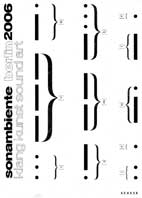 |
Dr. Sabine Sanio (DeutschlandRadio): Georg Kleins Ortsklang / Site-Sounds by Georg Klein |
| Dr. Barbara Bathelmes (Catalog TRASA): Georg Klein oder der Künstler als Orts-Seher. Georg Klein - artysta jako wizjoner miejsca.
/ Georg Klein or the Artist as Local Visionary. "Georg Klein's Sound Situations in Public Space is a characteristic theatrical moment. Theatrical in the sense that the observer or listener is compelled by the situation to no longer remain silent and motionless in front of the object, or to listen attentively to the music being performed by the interpreter, fixed in his seat, but to react, to move, to take action. Thus the installation artist literally 'stages' the listener, comparable with the director and stage designer." (In: Katalog TRASA warszawa-berlin, Kehrer-Verlag, Heidelberg 2004) > total articel (PDF, german/polish) |
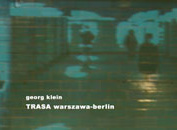 |
| Dr. Piotr Rypson (Catalog TRASA): Woanders. Gdzie indziej. / Elsewhere (TRASA warszawa-berlin) „The author of TRASA bases his work on the clichés of the antitheses East-West, Berlin-Warsaw, Germany and Poland, without offering ready solutions. Paradoxically, he makes use of the latest media technology in order to cause this vehicle for mass emotions and political and economic manipulation to falter with references devised and managed by the media.“ (In: Katalog TRASA warszawa-berlin, Kehrer-Verlag, Heidelberg, 2004) > total articel (PDF, german/polish) |
 |
|
Dr. Claudia Tittel (Positionen): JE est un autre" - Selbsterkenntnis. / I Is Another – Self-Knowledge "Georg Klein endeavours to transfer self-knowledge to another plane which lies in the ambivalence of the ephemeral. The mirror keeps the viewer in a 1:1 ratio within the image, which he can break through himself by disappearing from the image – and thus from his own field of vision." (In: Positionen 57, 2003) |
| Julia Gerlach (Positionen): Inmitten Marl. Erster Deutscher Klangkunstpreis. / In the Midst of Marl). First German Sound Art Award "Thus an open yet thematically and materially self-referential system emerged from sound – text – location, both unstable and contradictory in itself – like the situation itself. One is conscious of this, and that makes the work powerful." (In: Positionen 55, 2003) |
| Prof. Doris Kolesch (FU Berlin): Gehör-Gänge - Zu Georg Kleins Klangsituation „transition“ / Auditory Canals – On Georg Klein's Sound Situation "transition" "What Klein and Kleist are saying here, from the perspective of production aesthetics, as it were, about stationary sound and the stone suspended in the air also has consequences for the temporal dimension of music listening. Klein's work examines the indissoluble interconnection of contemporary listening, on the one hand, and the memory of what is heard, on the other." (Art Lecture vom 14.6. 2002, SFB Kulturen des Performativen, FU Berlin) |
